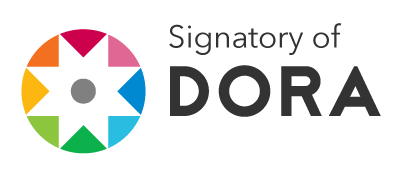Evaluación de las Actividades Antioxidante y Antitopoisomerasa de Extractos de Plantas de la Ecorregión Cafetera Colombiana
Resumen
De la parte aérea de 29 especies de plantas recolectadas en la Ecorregión Cafetera Colombiana se obtuvieron por maceración pasiva los extractos de diclorometano y metanol a los cuales se les determinó la actividad antitopoisomerasa empleando cepas mutadas de Saccharomyces cerevisiae por el método de difusión en agar; adicionalmente, se les evaluó la capacidad captadora de radicales libres por los métodos de los radicales 1,1-Difenil-2-picrilhidrazilo (DPPH•) y ácido 2,2' azinobis-(3-etilbenzotiazolina)-6-sulfónico (ABTS•+). Así mismo, se determinó el contenido de fenoles totales por el método de Folin-Ciocalteu a todos los extractos que presentaron capacidad antioxidante igual o superior al 25% en el ensayo de DPPH•. Se encontraron 8 extractos de diclorometano y 15 de metanol con actividad antioxidante superior al 25% y alto contenido de fenoles totales. Los extractos de metanol de Hyeronima sp. y Acalypha diversifolia (Euphorbiaceae) presentaron los porcentajes de actividad antioxidante más altos con valores de 41.83% (45.56 μmolTrolox/g extracto) y 41.79% (45.51 μmolTrolox/g extracto) mediante el método del DPPH•, respectivamente. Ninguno de los extractos evaluados mostró actividad antitopoisomerasa a través del método empleado.
Descargas
Lenguajes:
esAgencias de apoyo:
Universidad Tecnológica de Pereira y Centro de Excelencia CIEBREGReferencias bibliográficas
• Albayrak S., Aksoy A., Sagdic O & Hamzaoglu E. 2010. Compositions, antioxidant and antimicrobial activities of Helichrysum (Asteraceae) species collected from Turkey. Food Chemistry. 119: 114–122.
• Alberts B., Bray D., Hopkin K., Johnson A., Lewis J., Raff M., Roberts K & Waler. 2006. Introducción a la biología celular 2 ed, p. 170- 177. Editorial Médica Panamericana. Buenos Aires, Argentina.
• Brand - Williams W., Cuvelier M & Berset C. 1995.Use of a Free Radical Method to Evaluate Antioxidant Activity.Lebensmittel-Wissenschaft und-Technologie. 28: 25-30.
• Cakir A., Mavi A., Yildirim A., Duru ME., Harmandar M & Kazaz C. 2003. Isolation and characterization of antioxidant phenolic compounds from the aerial parts of Hypericum hys-sopifolium L. byactivity-guided fractionation. J Ethnopharmacol. 87: 73–83.
• Cardeño A., Molina M., Miranda I., Tafurt G., Martínez J & Stashenko E. 2007. Actividad antioxidante y contenido total de fenoles de los extractos etanólicos de Salvia aratocensis, Salvia sochensis, Bidens reptons y Montanoa ovalifolia. ScientiaetTechnica. 33: 205-207.
• Correa Y., Niño J & Mosquera O. 2007. Inhibición del ADN por extractos vegetales de plantas de la Ecorregion Cafetera. Scientia et Technica. 33: 423-424.
• Deweese J & Osheroff N. 2009. The DNA cleavage reaction of topoisomerase II: wolf in sheep’s clothing. Nucleic Acids Research. 37: 738-748.
• Dudonne S., Vitrac X., Coutiere P., Woillez M & Merillon JM. 2009. Comparative study of an-tioxidation properties and total phenolic content of 30 plant extracts of industrial interest using DPPH, ABTS, FRAP, SOD, and ORAC assays. Journal of Agricultural and Food Chemistry.57: 1768-1774.
• Farombi EO., Ogundipe OO., Uhuwqngho ES., Adeyanju MA & Moody JO. 2003. Antioxidant properties of extracts from Alchornealaxiflora (Benth) Pax and Hoffman.Phytoterapy Research 17: 713-716.
• Floegel A., Kim D-O., Chung S-J., Koo S I & Chun O K. 2011. Comparison of ABTS/ DPPH assays to measure antioxidant capacity in popular antioxidant-rich US foods. Journal of Food Composition and Analysis. 24:1043–1048.
• Frassinetti S., Della Croce C M., Caltavuturo L. & Longo V. 2012. Antimutagenic and antioxidant activity of Lisosan G in Saccharomyces cerevisiae. Food Chemistry. 135: 2029-2034.
• Gunatilaka L., Kingston D & Johnaon R. 1994. Mechanism-based isolation and structures of some anticancer active natural products. Pure& Applied Chemistry. 66: 2219-2222.
• Hoeijmakers J. 2009. DNA Damage, Aging, and Cancer. New England Journal of Medicine. 361:1475-1485.
• Hosein G, Reza M, Reza A, Rokhbakhsh-Zamin. (2002). Cytotoxic activity of medicinal plants used in Iranian traditional medicine on two strains of Saccharomyces cerevisiae. DARU. 10: 162-164.
• Hussein Hamdy Roby M., Atef. Sarhana M., Abdel-Hamed Selima K & Ibrahim Khalel K. 2013. Evaluation of antioxidant activity, total phenols and phenolic compounds in thyme (Thymus vulgaris L.), sage (Salvia officinalis L.), and marjoram (Origanum majorana L.) extracts. Industrial Crops and Products.43: 827– 831.
• Javanmardi J., Stushnoff C., Locke E & Vivanco JM. 2003. Antioxidant activity and total phenolic content of Iranian Ocimum accessions. Food Chemistry. 83: 547–550.
• Ko S-H., Choi S-W., Ye S-K., Yoo S., Kim H-S & Chung M-H. 2008. Comparison of anti-oxidant activities of seventy herbs that have been used in Korean traditional medicine. Nutrition Research and Practice. 2: 143-151.
• Llorach R., Martinez-Sánchez A., Tomás-Barberán FA., Gil MG & Ferrere F. 2008. Characterization of polyphenols and antioxidant properties of five lettuce varieties and escarole Food Chemistry. 108: 1028–1038.
• Ministerio de Salud y Protección Social. 2012. Plan nacional para el control de cáncer en Colombia 2012-2020. Bogotá, Colombia. (Consultado 05 noviembre 2012, www.minsalud.gov.co/ Documentos y Publicaciones/Plan nacional para el control del cancer en Colombia.pdf).
• Moon J-K & Shibamoto T. 2009. Antioxidant Assays for Plant and Food Components. Journal of Agricultural Food and Chemistry. 57: 1655–1666.
• Natural Products. 63: 217-221.
• Niño J., Morales P., Batero J., Correa Y & Mosquera O. 2007. Extractos vegetales con actividad sobre cepas mutadas de Saccharomyces cerevisiae con deficiencia en el mecanismo de repara-ción del ADN. Scientia et Technica. 33: 431-434.
• Organización Mundial de la Salud-OMS. 2013. Enfermedades no transmisibles. (consultado 14 abril de 2013, http://www.who.int/ mediacentre/factsheets/fs355/es/)
• Parekh J & Chanda SV. 2007. In vitro Activity and Phytochemical Analsis of some Indian Medicinal Plants. Turk J Biol. 31: 53-58.
• Peng S., Peng L & Hoe J. 2006. Antioxidant activities of aqueous extracts of selected plants. Food Chemistry. 99: 755-783.
• Ramya Durga K., Karthikumar S & Jegatheesan K. 2010. Isolation of potential antibacterial and antioxidant compounds from Acalypha
• indica and Ocimum basilicum. African Journal of Plant Science. 4: 163-166.
• Re R., Pellegrini N., Proteggente A., Pannala A., Yang M & Rice-Evans C. 1999. Antioxidant activity applying and improved ABTS radical cationdecolorizationassay. Free Radical Biol. Med. 26: 1231-1237.
• Ríos J.L., Recio M.C. & Villar A. 1988. Screening methods for natural products with antimicrobial activity: A review of the literature. J of Ethnopharmacology. 23: 127–149.
• Rivero F., Fallarero A., Castañeda O., Dajas F., Manta E., Areces F., Mancini F & Vidal A. 2003. Antioxidant activity in vivo and in vitro of Halimeda incrassata aqueous extracts. Ciência e Tecnologia de Alimentos. 23: 256-263.
• Romero M., Cabrera E & Ortiz N. 2008. Informe sobre el estado de la biodiversidad en Colombia 2006-2007. Instituto de Investigación de Recursos Biológicos Alexander von Humboldt. Bogotá D.C, Colombia.
• Sabir SM., Ahmad SD., Hamid A., Khan MQ., Athayde ML., Santos DB., Boligon AA & Rocha JBT. 2012. Antioxidant and hepatoprotective activity of ethanolic extract of leaves of Solidago microglossa containing polyphenolic compounds. Food Chemistry 131: 741–747.
• Samaniego C., Troncoso AM., García MC., Quesada JJ., Lopez H & Lopez MC. 2007. Different radical scaveging test in virgin olive oil and their relation to the total phenol content. Analytica Chimica Acta. 593: 103-107.
• Singleton V & Rossi J. 1965. Colorimetry of total phenolics with phosphomolybdic – phos-photungstic acid reagents. American Journal of Enology and Viticulture. 16: 144-58.
• Vurusaner B., Poli G & Basaga H. 2012. Tumor suppressor genes and ROS: complex networks of interactions. Free Radical Biology & Medicine. 52: 7–18.
• Wagner H & Bladt S. 1996. Plant drug analysis: thin layer chromatography. Springer. Berlin, Germany.
• Wu Y-P., Meng X-Sh., Bao Y-R. & Wang. Sh. 2013. Pharmacokinetic study of our flavones of Glycyrrhiza in rat plasma using HPLC-MS. Journal of Ethnopharmacology. 148: 266-270.
• Yuan W., Li S., Ownby S., Zhang Z., Wang P., Zhang W & Beasley RS. 2007. Flavonoids, coumarins and triterpenes from the aerial parts of Cnidoscolus texanus. Planta Medica. 73:1304-1308.
• Zhou B, Johnson R, Mattern M, Wang W, Hecht S, Beck H, Ortiz A, Kingston D.(2000). Isolation and biochemical characterization of a new topoisomerase I inhibitor from Ocotea leucox-ylon. Journal of of Natural Products. 63:217-221.












